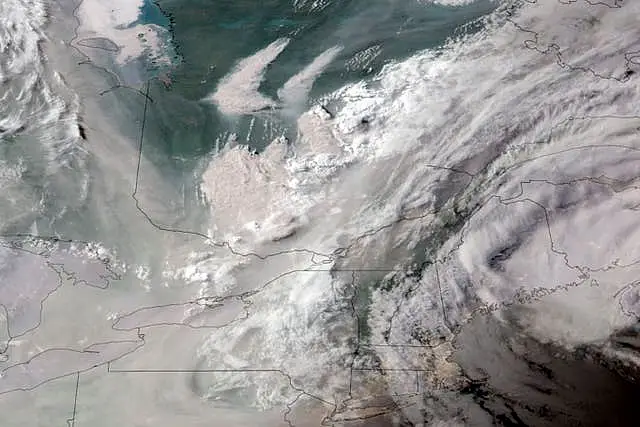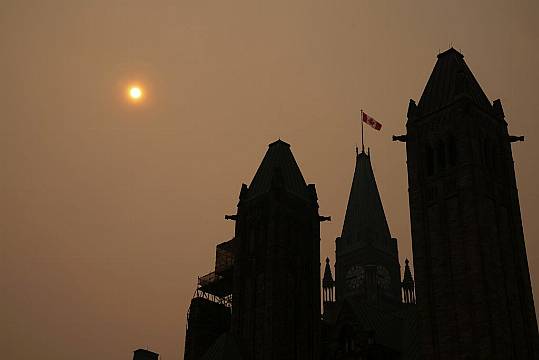Northern Quebec’s largest town is being evacuated as firefighters work to beat back threats from out-of-control blazes in remote communities in the northern and north-western parts of the Canadian province.
According to the forest fire prevention agency, more than 150 forest fires were burning in the province on Tuesday, including more than 110 deemed out of control.
The intense wildfires are blanketing the north-eastern US and parts of Eastern Canada in a haze, turning the air acrid, the sky yellowish-grey and prompting warnings for vulnerable populations to stay inside.

The effects of hundreds of wildfires burning in Quebec could be felt as far away as New York City and the US state of New England, blotting out skylines and irritating throats.
Late on Tuesday, authorities issued an evacuation order for Chibougamau, Quebec, a town of about 7,500 in the remote region of the province.
Authorities said the evacuation is under way and promised more details on Wednesday.
“We’re following all of this from hour to hour, obviously,” Premier Francois Legault told reporters in Sept-Iles, Quebec.
“If we look at the situation in Quebec as a whole, there are several places where it is still worrying.”
Mr Legault said the Abitibi-Temiscamingue region in north-western Quebec is an area of particular concern, with the communities of Normetal and Lebel-sur-Quevillon under threat.
#onstorm #onwx ⚠️ Air Quality Update for Southern Ontario
VALID: 5:15 PM - June 6, 2023
We are continuing to experience very high to unhealthy levels of air pollution this afternoon across Southern Ontario. This is caused by the wildfire smoke from Quebec.
Starting to see the… pic.twitter.com/7Zs58pzC1e— Instant Weather Ontario (@IWeatherON) June 6, 2023
Advertisement
The mayor of Lebel-sur-Quevillon, where about 2,100 people were forced from their homes at the weekend, said the fire is about six miles outside of town, but its advance has been slower than expected.
“The fire started in an area where there were no trees, which slowed it down considerably,” Mayor Guy Lafreniere said.
Other northern communities at risk include Chibougamau the Cree village of Chisasibi on the eastern shore of James Bay.
Firefighting resources have also been dispatched to Hydro-Quebec’s Micoua substation near Baie-Comeau, Mr Legault said.
On Monday, Mr Legault said authorities had no choice but to leave the hamlet of Clova to burn, drawing the ire of local residents.
Our very smokey skies and hazy weather is from new #wildfires🔥in southern Ontario and Quebec Canada. The flow in the atmosphere is moving the plumes of smoke southward across the #GreatLakes region and the Northeast U.S. #OHwx #PAwx #NWS #Cleveland #Weather pic.twitter.com/MSnwP75h8G
— NWS Cleveland (@NWSCLE) June 6, 2023
Mr Legault said he had simply repeated what fire prevention officials told him: the fire around the tiny community about 201 miles north-west of Montreal was too intense to send water bombers.
That remained true on Tuesday, he said, but he noted that no homes had burned.
Dominic Vincent, the owner of the Auberge Restaurant Clova, said that by Monday afternoon the situation in the area had already improved, aided by cooler temperatures and a change in wind direction.
While smoke remains visible, it is far less intense, he said.
Quebec natural resources minister Maite Blanchette Vezina told reporters in Quebec City that evacuees across the province number just over 8,300, down from 10,000 to start the week, but the Abitibi region remains a concern.
“We are not expecting rain in the short term, which is what makes it more difficult to fight fires,” Ms Blanchette Vwzina said.







